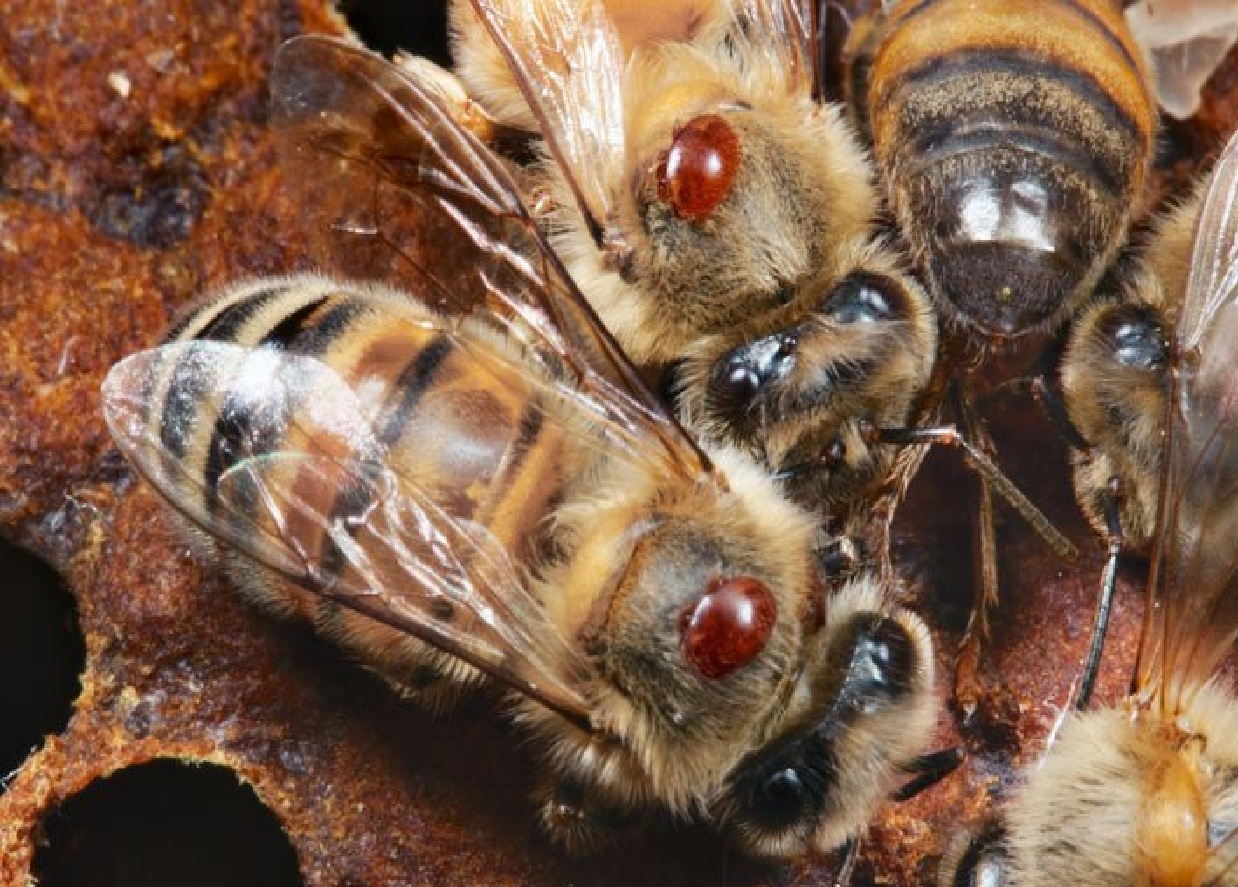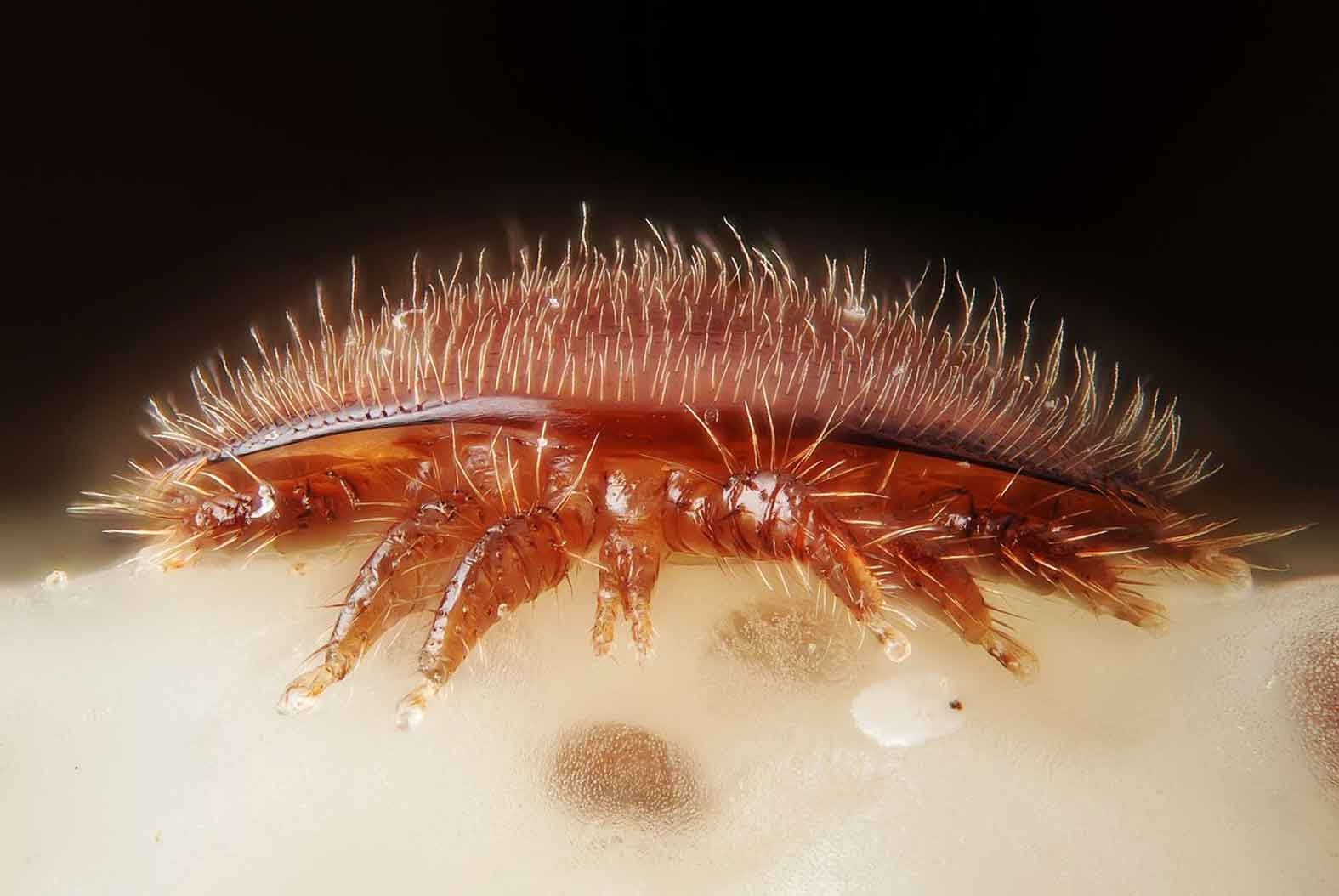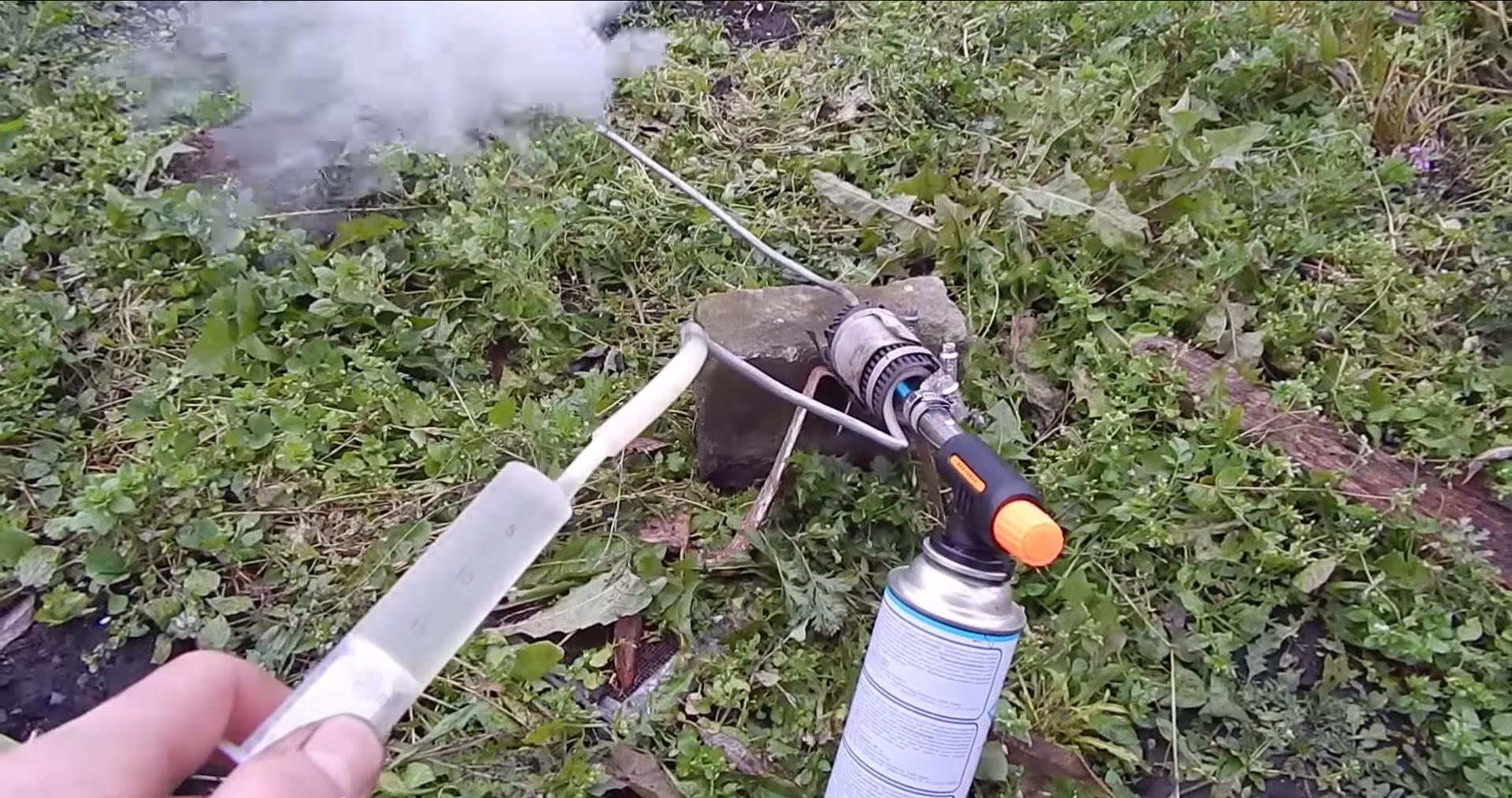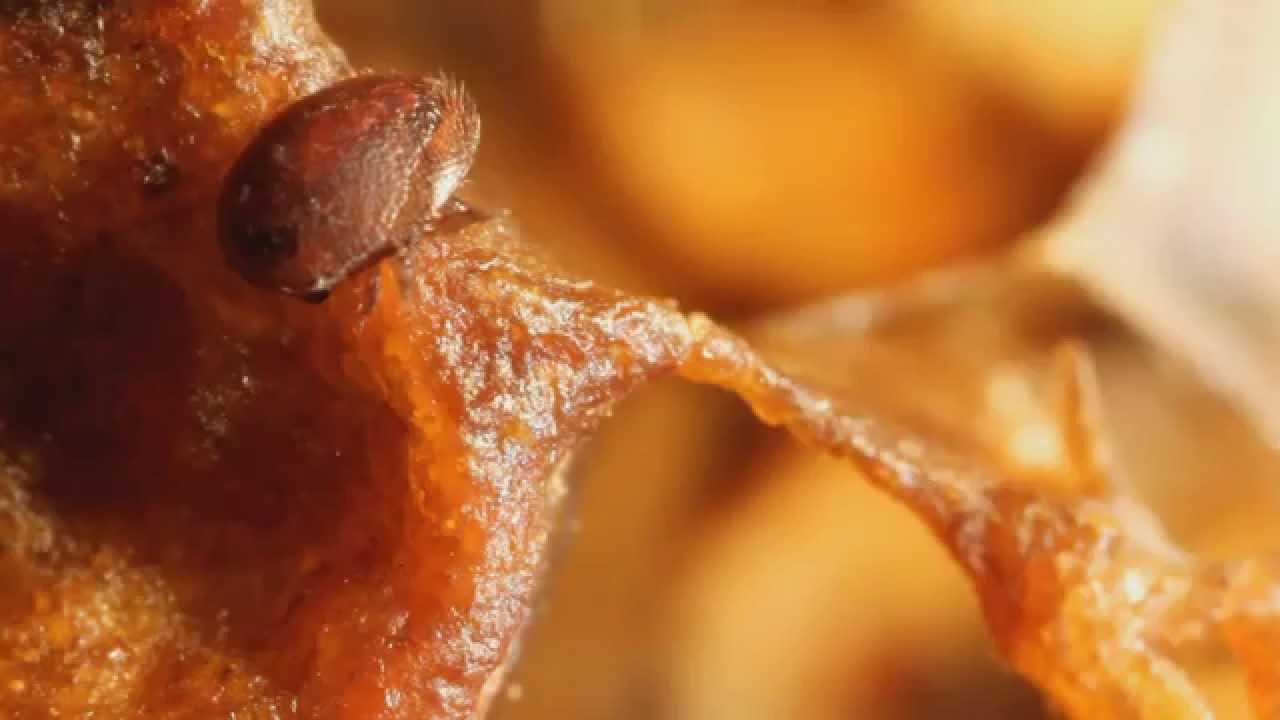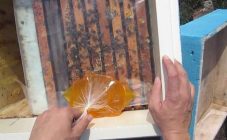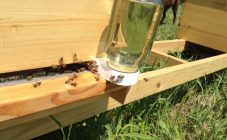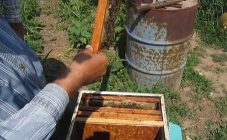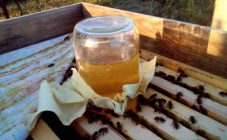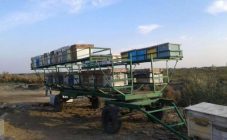Content:
Since the middle of the last century, beekeepers all over the world have been fighting against the tick-borne disease of bees - varroatosis. The disease appeared suddenly and literally before our eyes spread across all continents, which was facilitated by humans, uncontrollably resettling and crossing insects of different breeds.
Varroatosis of bees: what is it
The Varroa Jacobsoni mite has long been a parasite on Indian bees. Moreover, he did not particularly harm them. Perhaps the Indian bee's tolerance for mites made them unsuitable for breeding in apiaries. After the European melliferous animals were brought to India, the tick passed to a new host. European bees could not resist the local parasite. An epidemic began, which led to the devastation of many apiaries.
Only adult females that hibernate on bees parasitize, penetrating deeply between the abdominal segments and feeding on hemolymph. They can be seen with the naked eye - this is a small brown dot on the body of a bee or larva. They breed in the brood. To start laying during the week, females need enhanced nutrition, which they find in open brood cells or on worker bees.
After the cell is sealed, the female becomes active, parasitizing the larvae of bees or drones. After the bee larva enters the pupal stage, it weaves a cocoon and lays eggs. Thus, the brood contains the most mites. Bees are born too small with damaged wings or none at all.
Why is it very difficult to fight the disease:
- after the destruction of parasites on adult insects, they quickly reappear from the hatching brood;
- bee colonies are infected by "wandering bees", acquired bees and queens;
- mutates rapidly, acquiring resistance to chemicals over time.
Varroatosis in bees has the following symptoms:
- Young bees and drones are small.
- Their lifespan decreases.
- Reduced resistance to other diseases
- Wintering is restless, the hive is buzzing, some fly out.
Treatment of bees in the summer with folk remedies
Varroosis of bees without proper treatment can very quickly destroy the entire apiary.
What folk remedies are used to treat bees from varroatosis in the summer?
- Formic acid. Takes a leading place in the fight against ticks. It is always in flower and honeydew honey. Placed in the hive in plastic bags, flat vials or plastic caps.
- Coniferous flour. Any needles are dried, crushed into powder, sprinkled along the streets with bees, 50 g per family.
- Essential oils. Dill, fir, eucalyptus. To prevent mites from multiplying. They are applied to sheets of paper, which are placed above the bottom of the hive and on top of the frames.
- Plant dust. Dried leaves of eucalyptus, thyme, tansy and other essential oil plants are ground into dust and sprinkled along the streets.
- Ledum, dried horseradish roots are laid in a smoker. Frames placed in polyethylene bags or thermal chambers are processed.
Another biological method is the use of oxalic acid. It requires much less than formic acid.Only about 2g for quality processing.
The hives must be cleaned regularly, as some of the mites do not die, but simply fall to the bottom.
Treatment of bees from varroatosis in the fall
Processing in autumn is the most important. Colonies and hives are cultivated at the end of August after the end of the honey harvest and before wintering. At this time, you can use chemicals such as "Bipin" or "Akarasan" because there is almost no brood in the family.
You can carry out heat treatment in special thermal chambers at temperatures up to +48 degrees for 8 minutes. At elevated temperatures, the mites leave the host's body.
During feeding, in preparation for winter, the biological preparation "KAS" -81 is used. It is made from plant materials - pine buds and wormwood. The drug is added to complementary foods - sugar syrup or honey.
Herbal preparations are used such as:
- an alcoholic solution of hot pepper with propolis;
- pre-chopped thyme or thyme;
- wormwood decoction;
- fir oil.
To collect the flares, you need a special mesh tray. You can use paper or tape smeared with petroleum jelly or oil. After placing the tablets or bags with poison in the hive, the entrance is closed for 1-2 hours. Then the preparation is opened by 1 - 2 cm, the preparation is left for 2 - 3 days.
When and with what drugs, medicines it is necessary to treat bees
Modern means for fighting the tick Apistan, Apifit, Fumisan. The names are different and depend on the country of origin. They all contain Acaricide, which is considered the most effective insecticide for killing ticks.
The disadvantage of these funds is that the tick dies only on insects, remaining in the sowing. Therefore, they should be applied in early spring or autumn, when there is no brood.
Benefits - almost do not affect the quality of honey. No addictive parasites.
It is recommended to process bee swarms in spring, summer after honey pumping and in autumn with one of the following preparations:
- phenothiazine;
- folbex - one strip per family;
- vapors of formicide
- 10% lactic acid.
If the hives are treated with smoke, a special unit is used - a smoke cannon. It evaporates the solution, the smoke of which is used to treat bees.
You can use smoke pills that work as fumigators. When ignited, they smolder without a flame, emitting a large amount of smoke containing the active substance.
Using records
Plates, on which the insecticide is applied, are installed in the hives for a long time. The dose is calculated so that the poison destroys the parasites, but does not affect the bees. The plates are hung in the hive. Bees rub against the plate and spread the poisonous agent for mites throughout the hive. The strips are set for a week if there is no brood and for 30 - 35 days if there is one.
This method is useless to apply in autumn at low temperatures, when the bees in the nest have formed a club and become less mobile. This method is not used during honey collection, otherwise the bee products will be contaminated with an insecticide.
Thymol treatment, consequences of intoxication
Thymol is moderately toxic to bees. They cannot handle weak families. Apply only after strengthening the swarm. For the treatment and prevention of diseases, it is best to use Timol in the spring or autumn as a supplementary feed in sugar syrup. The substance can be sprayed on the outer frames once a week for a month.
Main advantages:
- availability of medication;
- small price;
- the efficiency of killing parasites is almost 100%.
Disadvantages:
- a very strong persistent odor that cannot be removed for a long time;
- harmful to human health, affects the respiratory tract, causes skin irritation.
In addition to the above, the prevention of the disease is of great importance, namely the strict implementation of security and quarantine measures when selling queens and bees and moving apiaries.
